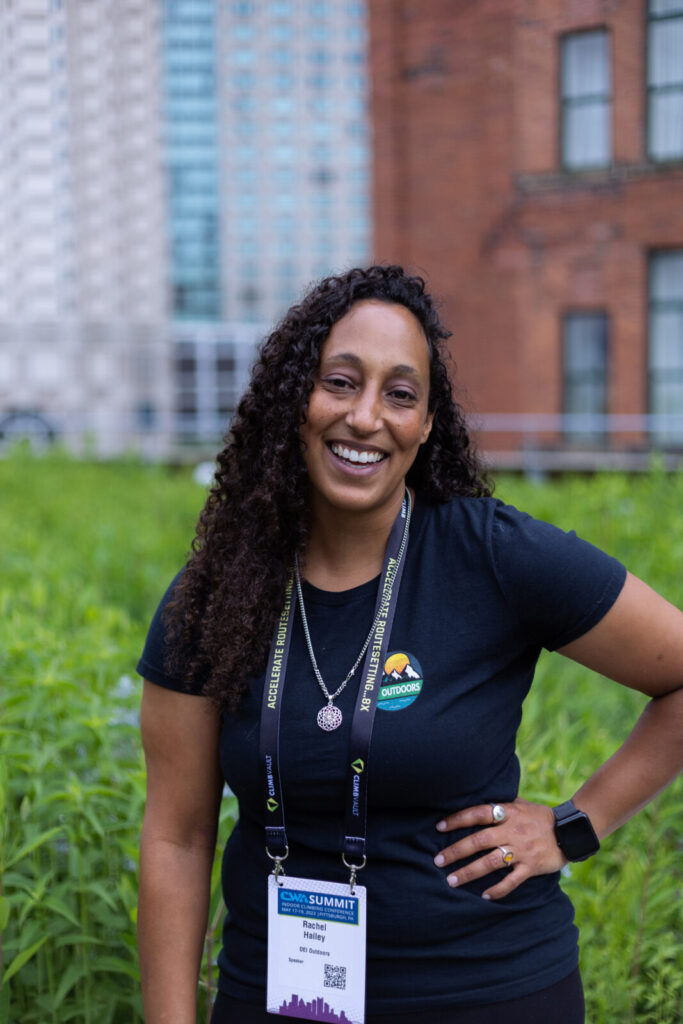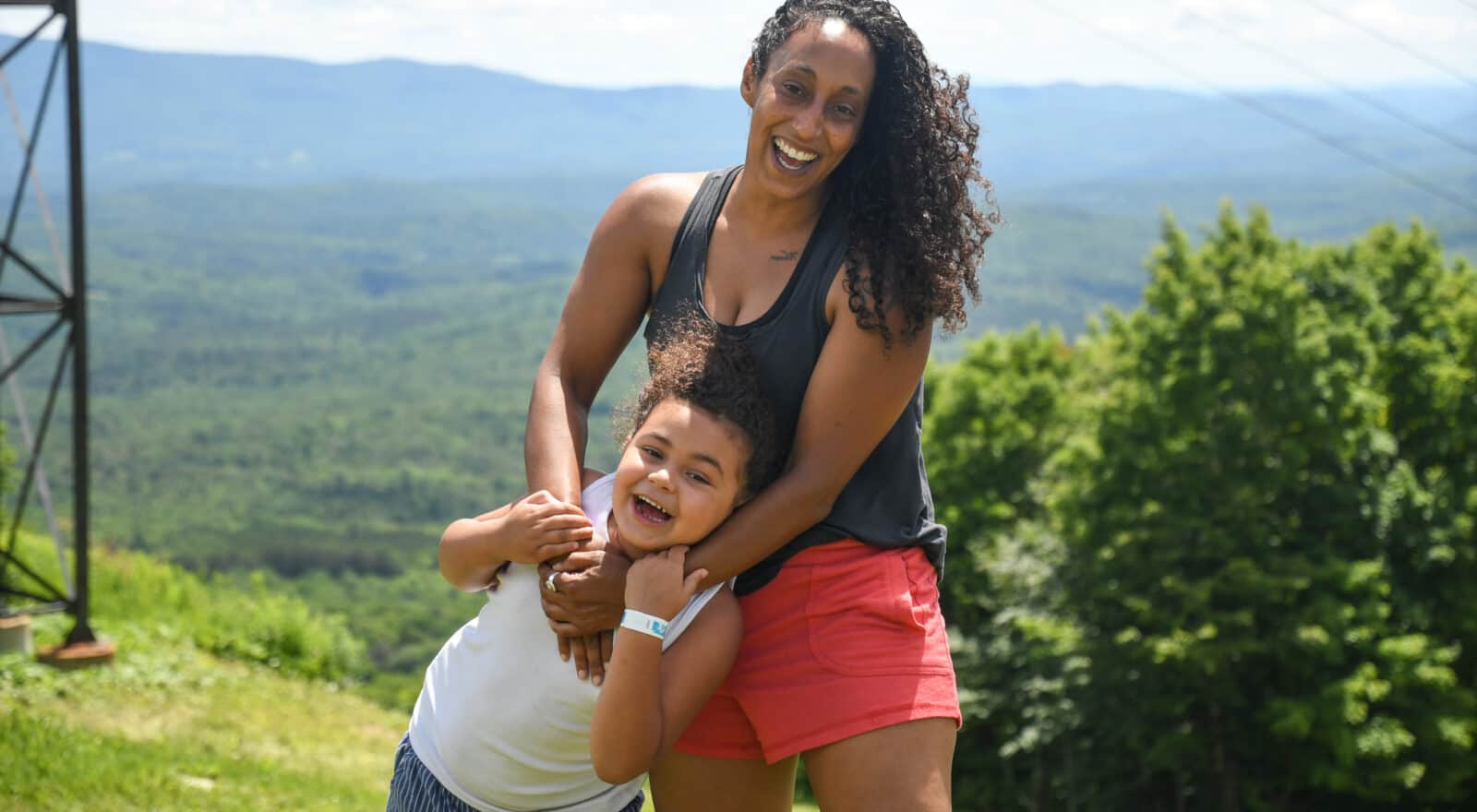Rachel Hailey remembers clearly the day her family moved to the country.
“I remember it exactly,” she says. “We’re in the car driving from Boston, and it felt like a million hours … I remember getting to our house, and I opened the back passenger door, and I tumbled out in a big pile of limbs, and I stand up and I say ‘we’re here’ — and my voice echoes, here, here, here, here.
“ … And it was the first time in my life I had ever heard my voice come back to me.”
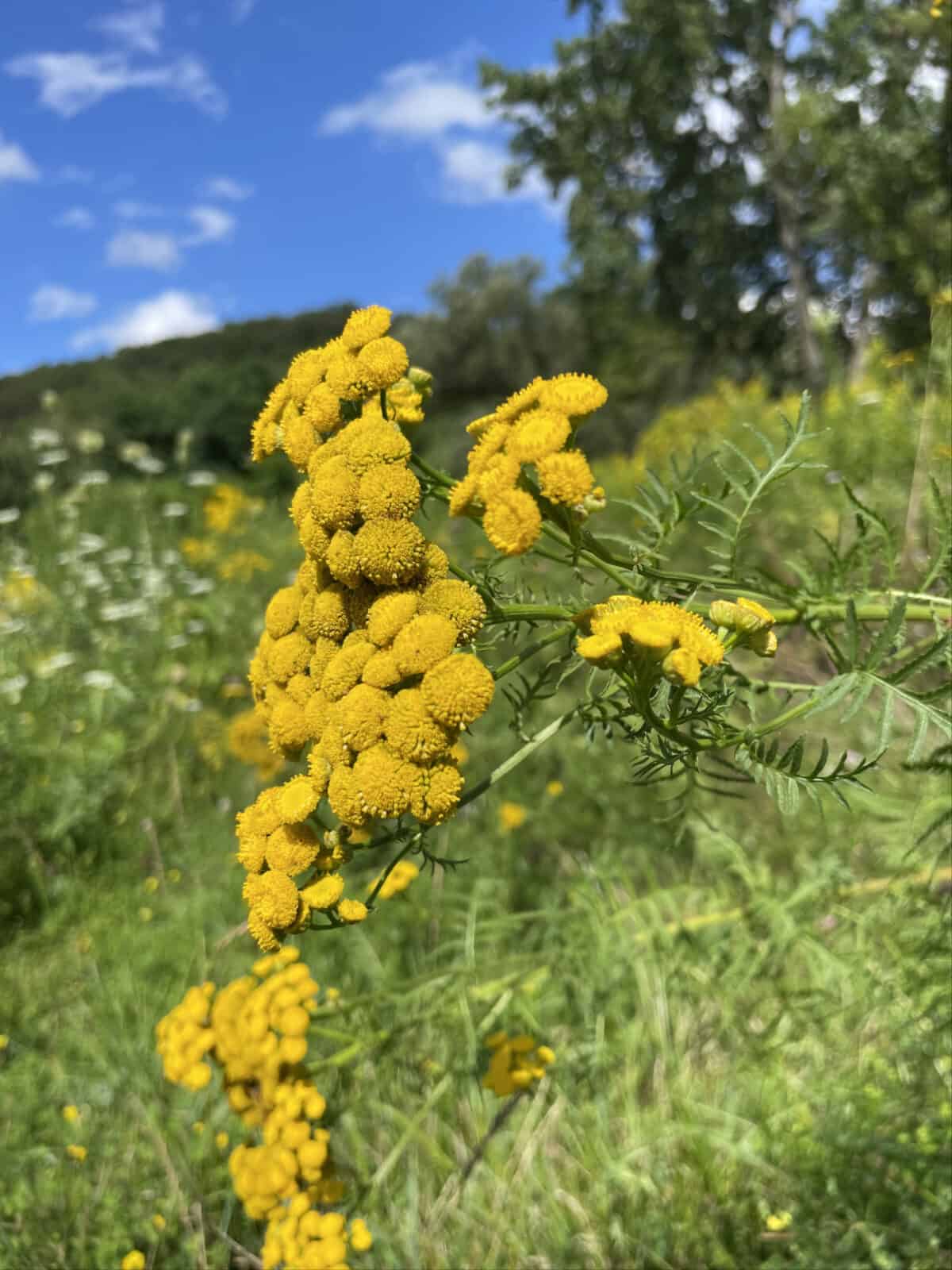
Tansy blooms golden in the meadow at the Spruces.
Since then, she has explored many ways of finding the strength of her voice outside — hiking, snowboarding on local slopes, launching into space on a ropes course. For several years when her daughter, Aria, was a baby and a toddler, Hailey managed the zipline canopy tour at Zoar outdoor adventure resort in Charlemont.
‘When I think about the future we’re creating — my daughter gets to walk anywhere in the outdoors and bring her whole self.’ — Rachel Hailey, founder and director of DEI Outdoors
And today, as the founder and director of DEI Outdoors, she has worked with inspired more than 100 organizations across the country in creating diversity and equity and belonging in outdoor spaces.
She is shaping a world where her daughter can walk up Mount Greylock, raft down the Deerfield River and take any path with confidence and excitement.
“When I think about the future we’re creating,” she said — “my daughter gets to walk anywhere in the outdoors and bring her whole self.”
“And it’s not even, ‘should I go down this trailhead? I don’t know who I’m going to run into.’ Or doesn’t have to be, ‘is the sport really for me?’ None of that. My future that I’m shooting for is when we just get to be who we are in the world and experience life without any borders or boundaries.”
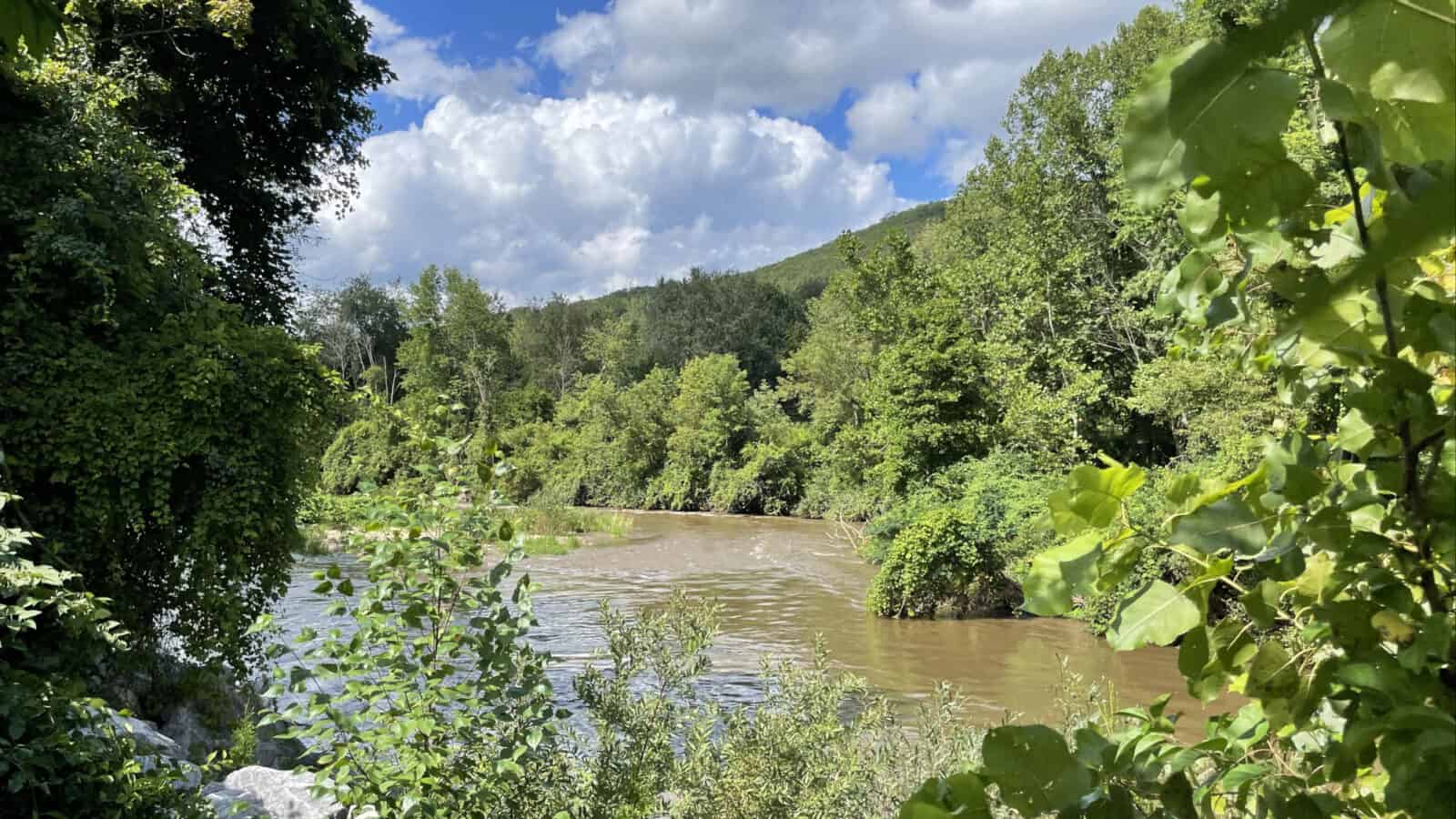
The Hoosic river runs high on a sunny afternoon at the Spruces in Williamstown.
At a pivotal time in her own life, she said, the outdoors gave her a sense of adventure and strength and all-out confidence.
“I think my story is somewhat unique,” she said, “but it’s also central to a lot of narrative from folks from the Black and Indigenous population, especially in the outdoors.”
She grew up originally in Roxbury, Boston, in a city-centered rhythm. Her family lived at the end of a long row of houses — she and her brother could head to the local learning center and get to the get to school on the train, and their world felt varied and urban.
And then, when her brother was 16 and she was nine, her family moved from Roxbury, Boston, to Middleborough, which she describes as the Cranberry Capital of the World.
“It was extremely rural,’ she said, “and incredibly racially and ethnically desolate. In my graduating class we had one other Black student who was adopted by white parents, and that was it, he and I in a class of 115.”
‘My future that I’m shooting for is when we just get to be who we are in the world and experience life without any borders or boundaries.’
In a place that could feel isolating, getting outdoors made the difference for her.
“It really changed the trajectory of my life,” she said, “in a way that I didn’t realize was happening.”
She went to a YMCA camp with a swimming program, horseback riding, a challenge course and climbing.
“And it was the first time I really realized that instead of like hiding myself away or being this wallflower child, I could just be bold and free and crazy,” she said. “I was up on the ropes course — I got to a point where I said, ‘You know what, I’m just going to live my life the way I want and without all the expectations of how I think it should be or what people tell me.’”
As an adult, she recognizes the strength she has taken and still takes from being outdoors, and the expectations she had absorbed from her community and from her family.

Bright orange coral mushrooms emerge in the moss along the '98 Trail in Williamstown.
“I grew up with this whole narrative that ’black people don’t do that,’” she said. “‘We don’t swim, we don’t play outside.’ — My mom was always saying, ‘oh no, not out there with the bugs. That’s not our thing.’”
She wanted to grow her own experiences and help other people to find them. And working in outdoor recreation and in education, she said, she saw gaps everywhere. She saw differences in who has the chance to be outdoors — who can get to the woods, to trails or a river, and who feels comfortable and familiar outside. Who knows comfortable clothing to wear on a hike … or the names of trees.
‘I know there are more folks from historically marginalized communities that want to be out here in leadership roles, or they want to be out here in these kinds of activities.’
“I know there are more folks from historically marginalized communities that want to be out here in leadership roles,” she said, “or they want to be out here in these kinds of activities, but it may not feel accessible for them, whether it’s socioeconomic or just in general.”
Barriers can be both practical and cultural, she said. Sometimes people run up against the cost of equipment or transportation. Sometimes they meet assumptions and ideas about who belongs outdoors and what being outdoors can mean.
As a woman working at height, she said, she built and installed challenge courses. She was working high up alongside all the men with her power drill and her hammer — and the safety harnesses were all made for men. They were the wrong size and shape to fit her safely and comfortably, and so she had to advocate for a different set of harnesses for women.
She wanted to bridge the gaps. She wanted to help more people see themselves in outdoor spaces, and to help more outdoor organizations grow their understanding of diversity and equity — starting with what those ideas mean for them.
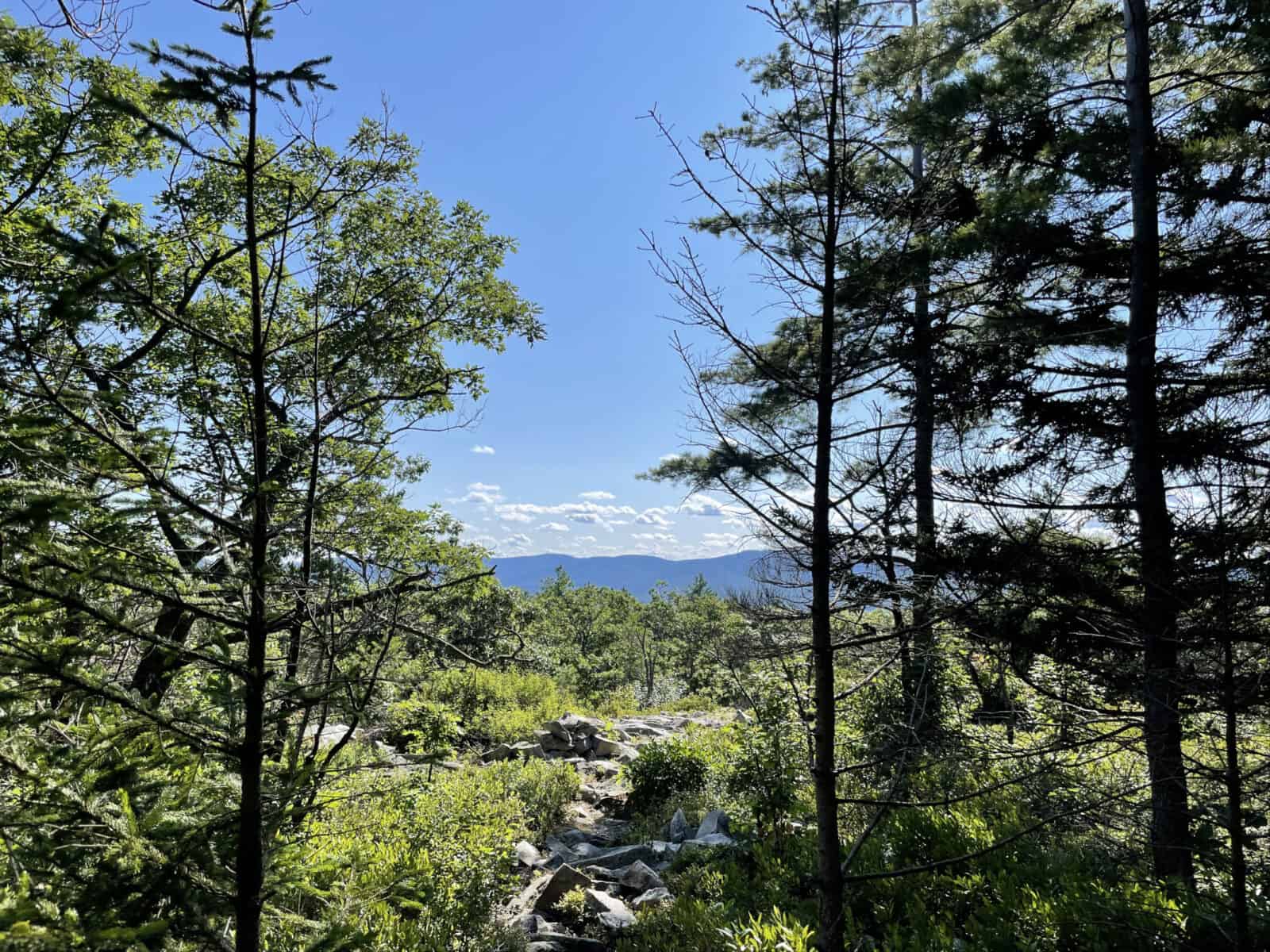
Cairns of quartzite cobbles mark an open stretch on the Pine Cobble Trail just below where it joins the Appalachian Trail.
“When you say ‘diverse,’” she said, “what exactly are we talking about? There are so many different ways — it’s so much more than race and ethnicity. … For me as the founder, I consider myself very grateful in a way to be a Black woman, a veteran, part of the LGBTQIA+ community. I have all these different ways of being diverse that intersect.”
From her lived experience and education, she said, she has the base to be able to work with outdoor organizations, to make them more inclusive. And she has found that many of them have the willingness and the resources to work her. In her early research, many places answered her positively.
“Everyone was looking to engage,” she said. “But what was stopping them — the interesting part was, it wasn’t budget, and it wasn’t like bandwidth — it was more that they were afraid to mess up. They were afraid to make a mistake … afraid they would say the wrong thing or do the wrong thing.”
‘People need a partner in transformation.’
And so she comes to DEI work from a perspective of compassion and discovery. She finds a greater effect, she said, when people share the experience of working through ideas together. They create a place where they can let go of shame and judgment and self doubt and work together to move forward
“It allows a space for people to risk and say what’s real,” she said, “and share in a powerful way, and not feel like they’re going to be judged.”
She offers a blend of teaching and action, she said, and she gives coaching along with the trainings. She can give an an audit, looking into an organization in detail, talking about how to make positive changes, and giving them support over time.
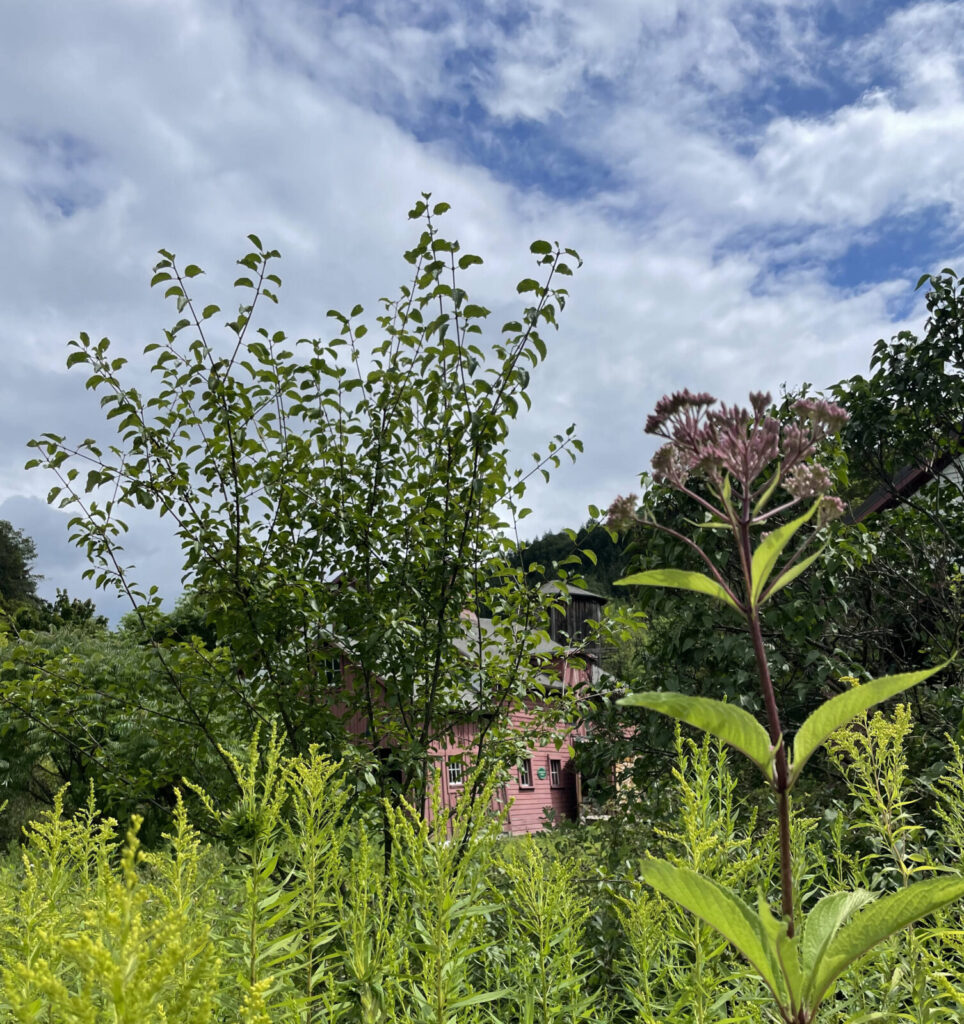
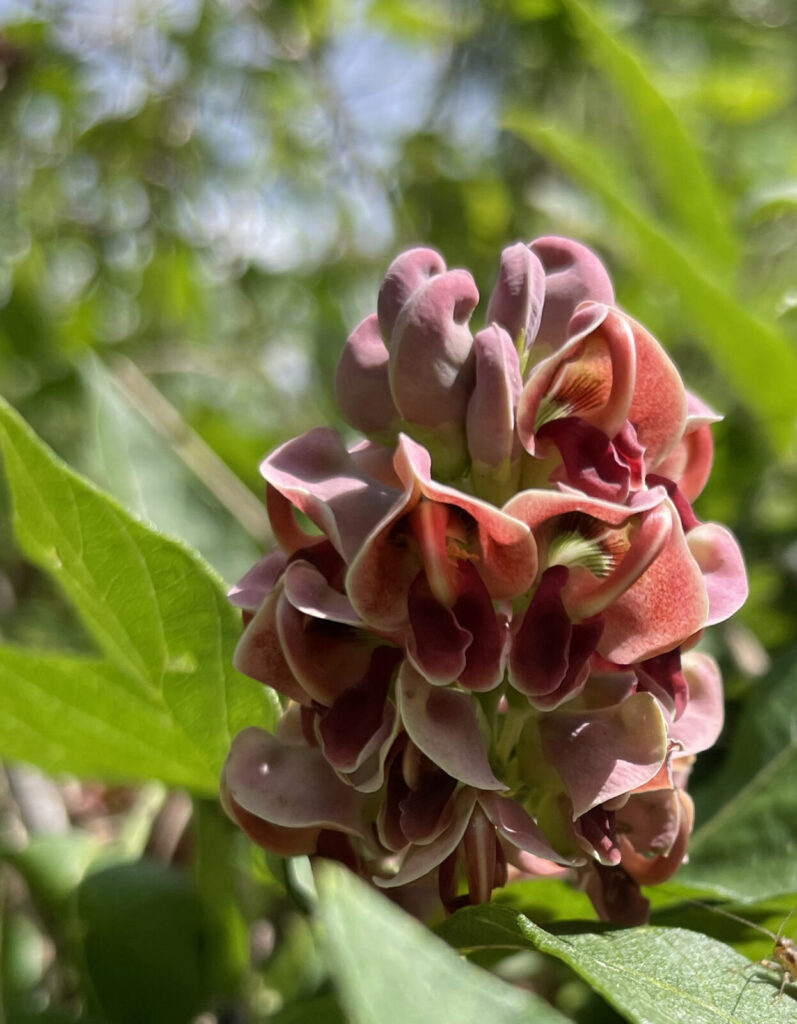
“People need a partner in transformation,” she said. “… Diversity work through our lens is really organizational culture work.”
talking with a company or a group about what they want and helping them think through the answers — What does positive change look like for you? What does diversity look like for you? What are you afraid of? What has stopped you? … How do we make change from here?
For her, much of DEI work is the work of having conversations, she said, becoming even more self-aware, seeing and understanding people.
In her trainings, she will have people work in large groups and small groups and in in pairs, because forming relationships causes real learning. She teaches people to create a sense of belonging, she said, and they need to experience it, to know how it feels, to create that sense in the moment and to have it happen for them.
“Underneath it all, I think we all want a lot of the same things,” she said. “We want to be free and connected, and genuinely, I think we all want love. … And I think the outdoors can do that.”
‘Underneath it all, I think we all want a lot of the same things. We want to be free and connected, and genuinely, I think we all want love. … And I think the outdoors can do that.’
Hailey now has a team of consultants across the country. While DEI Outdoors first put down roots in the Berkshires, her work has grown quickly, both locally and nationally.
She gave a TED-style talk at an international conference in 2019, she said, and as she began to hear interest, 2020 brought a broader awareness of inequity across the country. In the pandemic, as workplaces went virtual, she made contacts across a wide area, and by 2021 she was traveling and speaking nationally.
“And from there, it’s like a whole host of things can happen,” she said.
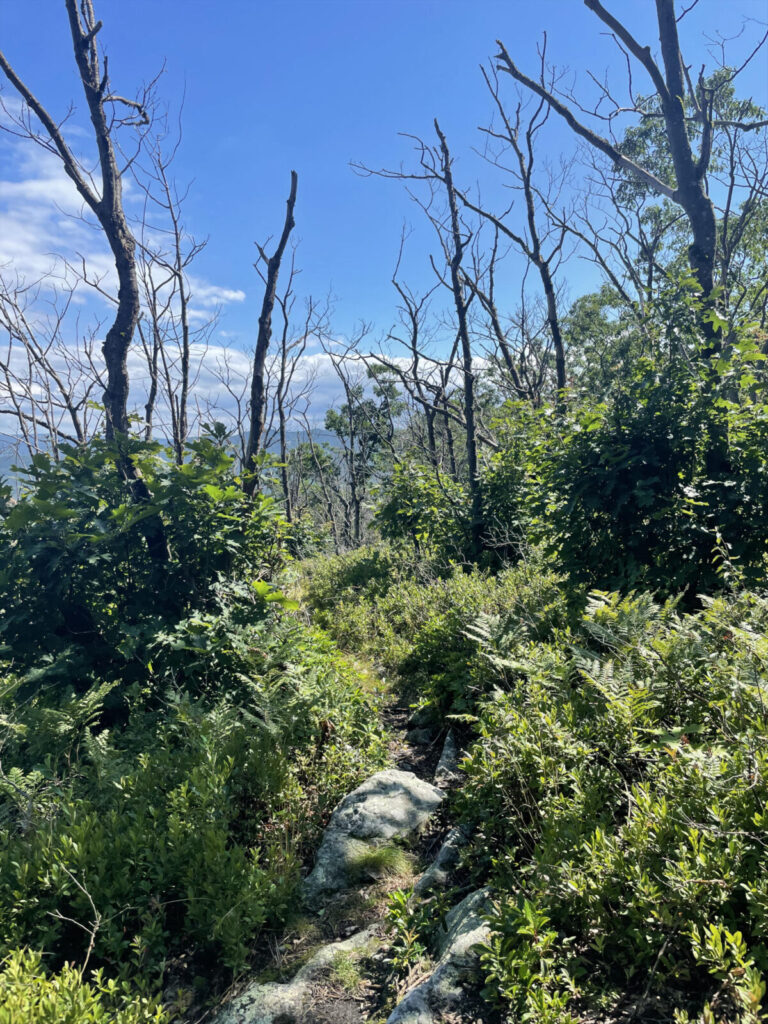
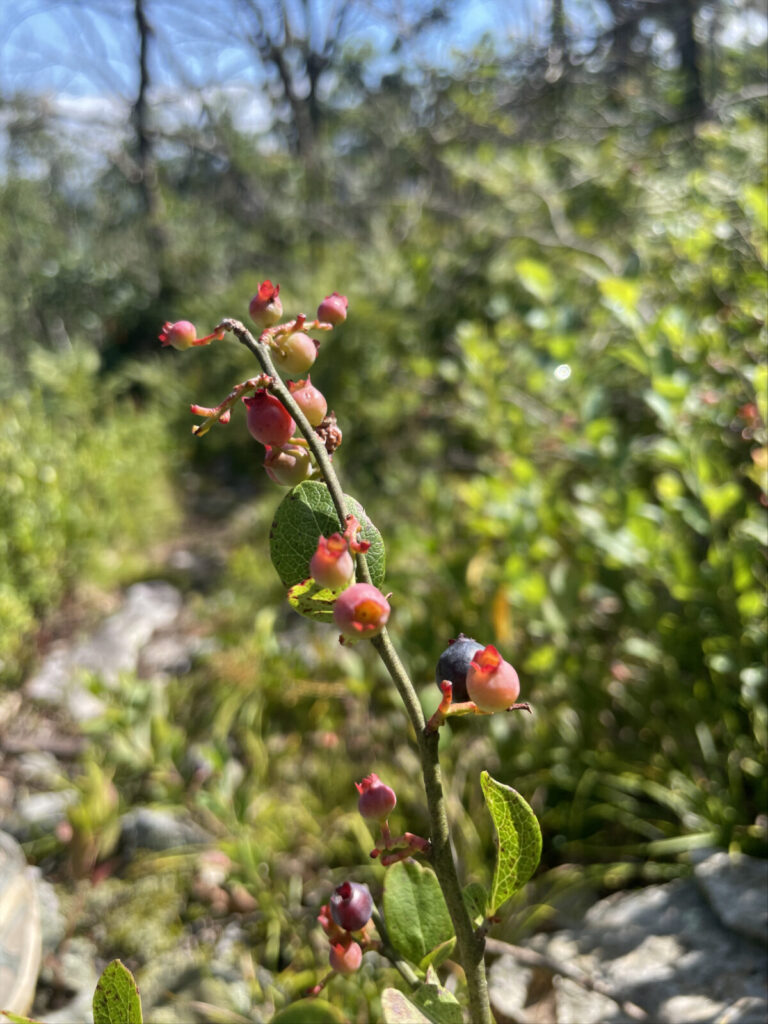
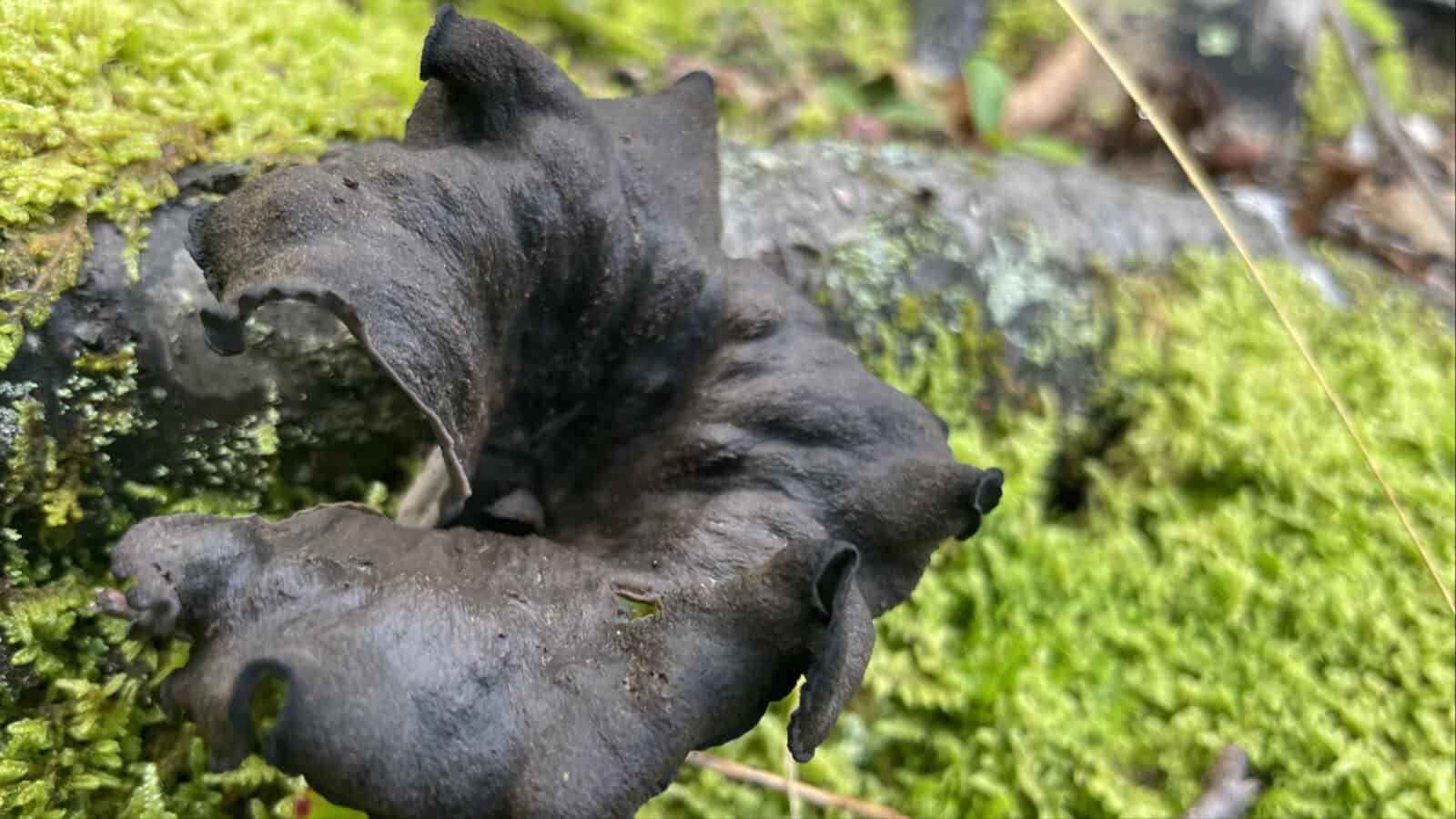
A black trumpet mushroom opens in the moss and the sunlight along the Appalachian Trail in North Adams.
She sees changes in action, rippling outward. A workshop or a training leads to a change in policy. A company thinks more broadly when they’re hiring — and a kid who has never thought they could get out and have fun comes to learn to swim or ski or find out what kind of caterpillar they’re looking at. And they see that the person leading the group can look like them.
They think, ’Oh, I see myself in them. They look like me, they talk like me, I get them, right? They get me.’ And they come back again.
“Small changes can make a huge difference,” Hailey said. “… (They) can pay dividends over time, when a whole new community feels like, okay, I get it, there’s space for me here, I belong here.”
And the ripple effect keeps growing. People feel happier, healthier, more engaged when they’re outside, she said, and giving that possibility to even more people creates new relationships in turn.
‘The happier, healthier, and more connected we are to each other and to nature, I think the better off we all will be.’
“We’re creating a better world in the long term,” she said. “Because the happier, healthier, and more connected we are to each other and to nature, I think the better off we all will be.”
Her daughter comes into the room, laughing and charged with energy.
“I’m always thinking about the world that we’re creating … for the next generation,” Hailey said. “Being a single parent, I have the inspiration right there to look at what’s the world she’s going to inherit, what county she’s going to inherit.”
Hailey wants her to see a world she and her daughter can get out and explore — white water rafting, rappelling down a quartzite cliff … walking a stretch of the Appalachian Trail with a day pack and looking for wild blueberries.
